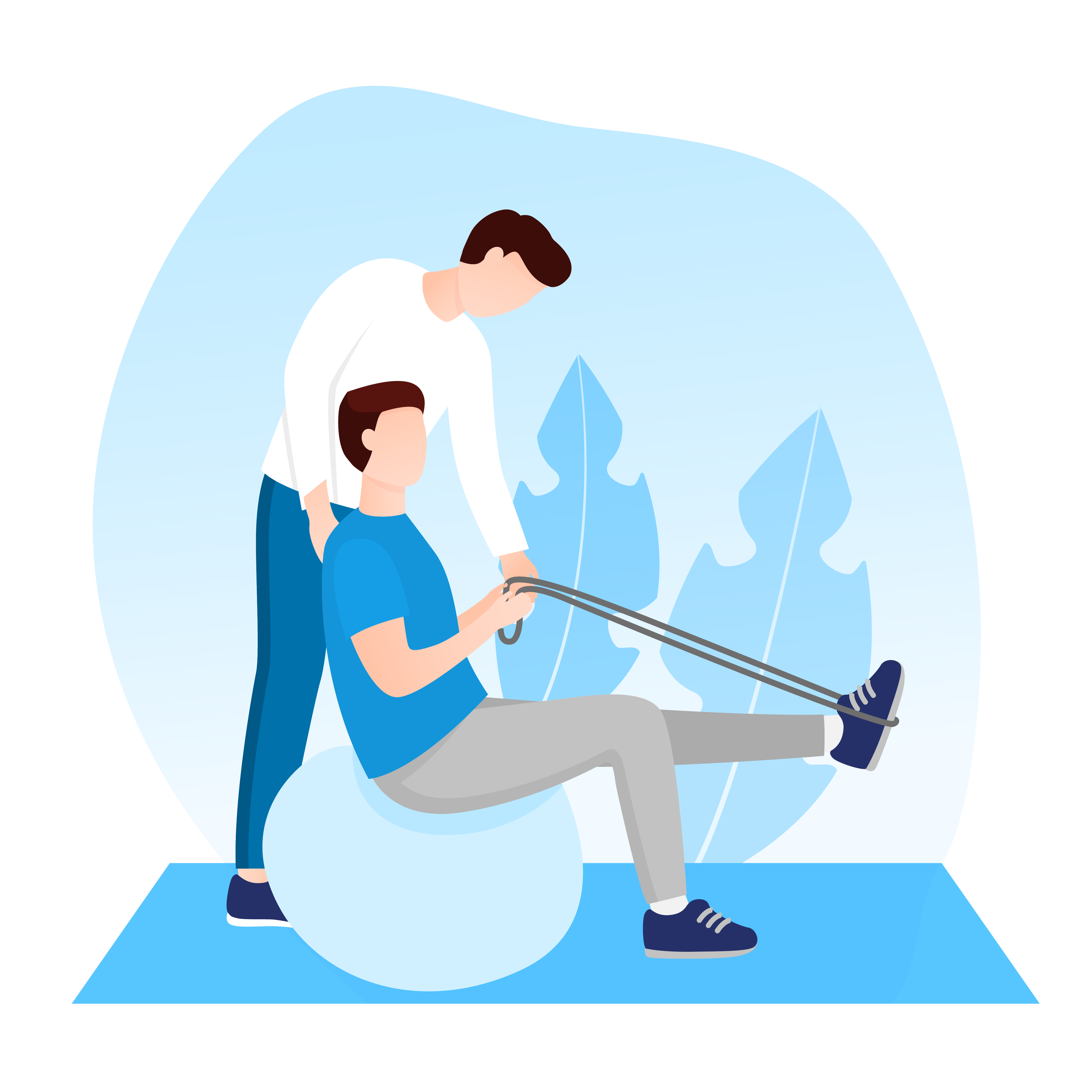
As well as supplying MS patients with rehabilitation tools, the Centre actively focuses on analysing the long-term treatment of patients with cognitive impairments.
Research requires quantitative observation in the form of measurements. In the area of healthcare, this takes the form of scales to assess observation, such as a pain scale, a quality-of-life scale, a coma scale that reflects a person's degree of consciousness, etc.
Realistic guidelines
Dr Bouquiaux explains: "My task, and that of our multidisciplinary team, is to work out a 'golden ratio' to support healthcare staff in the re-education and reactivation of patients. MS treatment begins with drugs and, in the event of a flare-up or marked change in the patient's motor abilities, this is immediately followed up with a re-education programme.
There's a major difference between rehabilitation, re-education and reactivation here. The purpose of rehabilitation is to retrieve lost movement capability, whereas that of re-education is to enable the patient to find new ways of moving after losing certain capabilities. Finally, the purpose of reactivation is to enable MS patients to make room in their lives for active movement. All three have their place at all times alongside drug treatment and, like drug treatment, need to be constantly monitored and adjusted. »
Rehabilitation: a lifelong 'therapy'
During this assessment, the patient needs to feel comfortable not only physically, but also mentally. My research arose from a pressing need to convert the commonly used scales, which were drawn up in lab environments and are therefore theoretical, into usable directives for the healthcare workers in the field.
For instance, when a subject in a lab environment says that they can do a series of exercises four times a day, this only appears to be true at the beginning. Very soon, motivation decreases, physical reserves become depleted and the proposed schedule just isn't feasible. The 'fun' and 'meaning' factors as a whole are decisive, as well as 'communication between patients and carers', and connections, for instance between patients during a group dance class or with the horse during horseback-riding therapy, are absolutely essential.
In the case of interaction with a horse, we try to find ways of relaxing the muscles, encouraging movement and promoting methods that are new to the patient and bring positive stimulation. The same applies to cooking or handicrafts workshops.
A multidisciplinary team also helps patients practice or learn appropriate ways of doing housework.
When advising MS patients, it's clear that the combination of drugs and rehabilitation that yields the best results and enables patients and their families to display resilience in the face of the disease. The rehabilitation process - education and reactivation - gives patients a sense of control despite the often unpredictable course of MS."
"Setting up ongoing communication and a connection between patients and the world around them transforms the services on offer from 'care' into lifelong 'therapy', even if the patient's capability is temporarily reduced by a flare-up. The intensity of patient reactions can vary considerably. They may be able to climb stairs rather than take the lift, but also even practice sports intensively.
The EDSS scale enables this to be done safely and avoid overheating or Uhthoff's phenomenon. Uhthoff's phenomenon occurs when the visual symptoms of MS patients are temporarily worsened by an increase in body temperature caused by exercise, sunlight, fever or a hot bath.
For this therapeutic approach to succeed on all levels and without side effects, patients need to begin early and continue in a professional environment in which motivating advice is available."
In practice
"Further to a general examination and basic assessment of cardiac function, the patient's ability to walk, balance and segmental muscle strength are tested. The result is an EDSS (Expanded Disability Status Scale) score. Patients are informed of the importance of hydration (before and after exercise) and nutrition (slow carbs 2 hours before exercising), and reassured if their neurological symptoms worsen during warm-up (Uhthoff's phenomenon). The patient wears a cardiac frequency monitor and is given a record book. Further to a flare-up, they are advised to stop all intensive physical activity for a time, then gradually resume exercising."
Want to know more about the EDSS score or the work of Dr Bouquiaux and his team?
You can watch the full video of this visit to CNRF on www.fondation-charcot.org/en.
